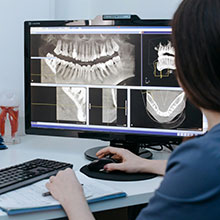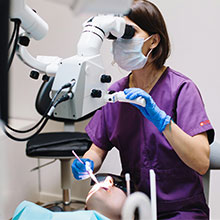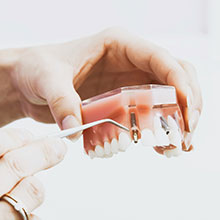Tooth Extractions
WHY MIGHT A TOOTH NEED TO BE REMOVED?
While our goal is always to preserve natural teeth, sometimes an extraction is the best option for your oral health. A tooth may need to be removed if:
- It is severely decayed or affected by advanced gum disease.
- A wisdom tooth is impacted and causing discomfort.
- A baby tooth hasn’t fallen out, preventing an adult tooth from coming through.
- More space is needed for braces or to ensure a good fit for dentures.
Benefits of a Tooth Extraction
Relieves pain caused by decay or infection. Stops infection from spreading to other teeth and gums. Creates space for proper alignment of remaining teeth.
What Happens During the Procedure?
Before the extraction, we will take an X-ray to determine the best way to remove the tooth. The procedure will be one of the following:
Simple tooth Extraction – If the tooth is visible, we will gently loosen it and remove it with forceps under local anaesthetic, so you won’t feel pain.
Surgical tooth Extraction – If the tooth is broken or still under the gum, a small incision may be needed to remove it.
Aftercare Instructions
Following the tooth extraction, it’s important to take care of your mouth to ensure proper healing.
Do not rinse, spit, or drink through a straw, as this can cause bleeding.
Eat soft foods once the numbness wears off, avoiding the area where the tooth was removed.
If you have stitches, they will dissolve on their own within 2-3 weeks.
Avoid touching the wound with your fingers or tongue.
Some minor bleeding is normal. If bleeding continues, bite down on a clean gauze pad for 30 minutes. If it persists, contact your dentist.
Ongoing Care:
Start rinsing with warm salt water the next day, up to four times a day.
Swelling and soreness are normal for a few days. You can take Paracetamol for pain relief if needed.
Try to avoid smoking for at least a week, as it can slow healing.
Place an old towel on your pillow at night in case of slight bleeding.
Possible Complications
Dry Socket: If pain develops a few days after the tooth extraction, it may be a dry socket, which occurs when the blood clot protecting the area is lost. This usually doesn’t require antibiotics but may need treatment from your dentist.
Sharp Edges: You might feel a sharp edge in the area after a couple of days. This is usually just the healing socket or a small piece of bone working its way out naturally.




